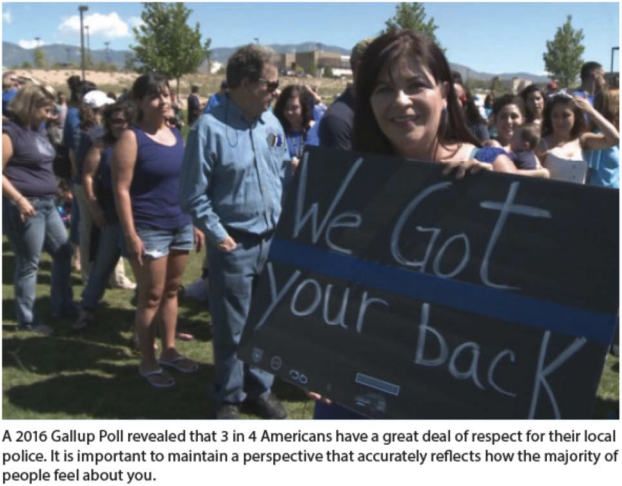Title
Straight Talk - March 2017

Body
Law enforcement as of late has become the most recent victim of statistics. It is often empirical evidence that’s used to club police agencies into federal submission and that empowers activists and civilian overseers alike. But are statistics all that they are cracked up to be? Are they accurate representations of the world around us, or are they merely our perceptions rooted in subjective experiences? Recently, a good friend sent me information on this very topic. It confirmed what I have always intuitively known about statistics, they are malleable and not necessarily indicative of facts. Many times a statistical perception diverges drastically from reality. There is a profound mismatch between what we know and what we think we know.

Data Visualization Expert Alan Smith highlights this very point by referencing a 2013 study by Ipsos MORI, a leading market research company in the UK, that conducted a survey of over a 1,000 adults in the UK to determine people’s statistical perceptions by asking several questions. One of those questions was, “For every 100 people living in England and Wales, how many people do you believe are Muslim?” The average answer was 24. Official figures, according to Smith, are actually five out of every 100. So the perceived ratio was nearly four times greater than the actual figure. In another example, over 1,000 adults in Japan were asked, for every 100 people in the country, how many live in rural areas? The average answer was 56. So the belief was that nearly half the population of Japan lived in rural areas, yet the reality is that only about 7 percent of the population actually lives in rural areas. So, what are we to take away from this, and how does it impact law enforcement? What we learn is that as a society, our perceptions are often very different from reality. Many of us are acutely aware of how the mainstream media has given validity to fictitious narratives that have shaped an attitude of negativity and mistrust toward law enforcement. It is easy to feel as though the anti-police movement is a juggernaut infecting the minds and opinions of people all across the country. We are left with the impression that people who support the police are in the minority and relegated to the tiny backwoods towns of Middle America. This couldn’t be further from the truth.

A 2016 Gallup poll asked people how much respect they had for the police. Respondents could answer, “A great deal,” “some” or “hardly any.” Seventy-six percent, or three in four Americans, said they have a “great deal” of respect for the police. Only 7 percent said they have hardly any respect. Even after a number of high-profile officer-involved shootings in 2016, in which the media pushed a biased narrative, respect for the police increased over the prior year among both whites and non-whites. While 80 percent of whites said they had a great deal of respect for their local police, two in three non-whites (67 percent) said they had the same level of respect. Quite the opposite of what some would have you believe.
I want to encourage all of you to maintain a perspective that accurately reflects how the majority of people feel about law enforcement. It will allow you to put the negative narrative in its proper context. Last March, I wrote about the role that perspective and perception play in the well-being of our lives. Learning to let go of the negative and embrace the positive must be a deliberate and intentional exercise. The alternative is to be consumed with anger, frustration and resentment. Do not allow a biased and hateful few determine how you perceive yourself or your profession. Hold your head high, wear the uniform with pride and know the majority support you.
Be smart. Be safe.
If you have questions, feel free to email me at [email protected] or contact me at (951) 415-5943.









